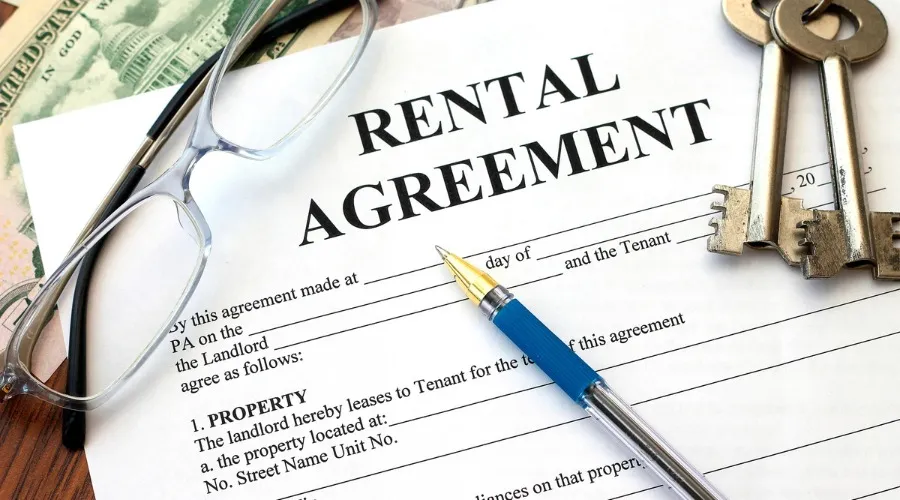Evicting a tenant in Nevada isn’t as simple as posting a notice on the door. The eviction process in Nevada involves specific legal steps that every landlord must follow to stay compliant and avoid delays or lawsuits. In this updated 2025 guide, LeaseRunner breaks down each stage of the process—from serving the proper notice to obtaining a court-ordered lockout—so you can manage tenant issues legally and effectively.
Recent Legal Updates for 2025 Nevada Eviction Laws
Starting in 2025, Nevada’s AB283 brings major updates to the eviction process with the goal of making the system more transparent and fair for both landlords and tenants.
More paperwork up front: Landlords must now serve tenants with a complete document package at the beginning of the eviction. This includes:
- A copy of the complaint affidavit
- The signed rental agreement
- A court summons explaining tenant duties and the response deadline
Faster Tenant response window: Tenants have seven judicial days to submit a written response after receiving the eviction notice.
Stricter court procedures: If no response is filed in time, the judge can issue a summary eviction order—but only if the landlord met all notice requirements under the new law.
Old laws repealed: AB283 removes outdated summary eviction statutes and replaces them with a clearer, streamlined process.
Purpose: The purpose of AB283 is to reduce confusion, prevent wrongful evictions, and ensure tenants are properly informed before being removed. It balances landlord rights with tenant protections in a more consistent legal framework.
Legitimate Grounds for Eviction in Nevada 2025
Understanding the legal grounds for eviction in Nevada helps landlords stay compliant and avoid costly mistakes. Being aware of both Landlord rights and Tenant rights ensures the eviction process follows proper legal procedures.
Nonpayment of rent
In Nevada, rent is considered late the day after it’s due—no grace period applies unless it’s outlined in the lease. If the tenant fails to pay rent on time, the landlord can issue a 7-Day Notice to Pay Rent or Quit. This gives the tenant seven days to pay the full amount or move out.
If the tenant pays within that window, the eviction process stops. If not, the landlord may proceed with a summary eviction under Nevada eviction laws. This marks one of the most common triggers for the eviction process in Nevada.
Lease violations
Violating a rental agreement can also lead to eviction. Common violations in Nevada include:
- Unauthorized pets
- Smoking is prohibited in the areas
- Property damage
Landlords must first issue a 5-Day Notice to Comply or Quit, allowing the tenant five days to fix the issue or leave. If the violation isn’t resolved, the landlord can begin the unlawful detainer process. You can explore more about what's considered damage versus normal wear and tear. Understanding Tenant Protections is key to avoiding claims of unlawful eviction.

Serious or illegal conduct
Nevada landlords can act quickly when tenants engage in illegal behavior. Examples include:
- Drug-related activity
- Running an illegal business
- Gang involvement
In such cases, the landlord can serve a 3-Day Notice to Quit with no opportunity to correct the issue. After three days, if the tenant remains, the landlord may proceed through the eviction process in Nevada by filing a case in court.. For background screenings to prevent such issues, consider using the LeaseRunner eviction check.
Expired lease or holdover tenant
Once the lease expires, a landlord may choose not to renew. Tenants who stay beyond their lease term without a new agreement can be evicted.
The required notice period depends on the rental type:
- 5-Day Notice (for weekly rentals)
- 7-Day Notice (monthly)
- 30-Day Notice (in some month-to-month cases)
If the tenant continues to rent the property after the notice period, the landlord may file an unlawful detainer action. Landlords can learn how to handle situations like breaking a lease in Nevada.
Squatter removal
Squatters in Nevada—people occupying a property without permission or a lease—are not considered tenants, so eviction laws differ.
- Property owners must serve a 3-Day Notice to Quit.
- If the squatter doesn’t leave, the owner can file an unlawful detainer case in court.
- Self-help actions like changing locks are illegal under NRS 118A.390.
For information specific to removing squatters and their rights, check out Nevada Squatter Rights.

How to Serve a Nevada Eviction Notice Legally
Before you start the eviction process in Nevada, it’s crucial to serve the correct notice the right way—otherwise, your case might get thrown out in court.
- 3-day notice to quit: Use for illegal activity or if the tenant is a squatter (NRS 40.2514, 40.250). No chance to fix the issue.
- 5-day notice to pay or quit:: For missed rent payments (NRS 40.253). Tenants have five judicial days to pay or move out.
- 5-day notice to cure or quit:: For lease violations like unauthorized pets or property damage (NRS 40.2516). Gives time to fix the problem.
- 7-day notice to quit: Use for tenants who stay after the lease ends or violate lease terms again (NRS 40.255). No cure option.
- 30-day notice to terminate:: For ending month-to-month tenancies (NRS 40.251). Provide 60 days for tenants living for over a year.
1. Prepare a valid written notice
Your written notice must include:
- The reason for eviction (nonpayment, nuisance, lease breach)
- Number of days to comply (3, 5, 7, or 30 days)
- Landlord’s name and contact info
- Rental property address
- Exact rent owed (if applicable)
- Instructions to fix the issue (if fixable)
- A warning about possible court action
2. Approved delivery methods
Under NRS 40.280, you must deliver the notice using one of these legal methods:
- Personal delivery: Hand it directly to the tenant—or someone suitable at their home/workplace.
- Certified mail: Send a return receipt to the tenant’s last known address.
- Posting + mailing: Tape it to the door and mail a copy via first-class mail.
Note: Keep proof (photos, mail receipts, affidavits) in case the tenant contests the notice in court.
3. Legal considerations before moving forward
Nevada law protects tenants in certain situations. Be careful to:
- Avoid retaliatory eviction (e.g., after tenant reports a code issue)
- Respect special protections for victims of domestic violence
- Never use self-help tactics like changing locks or removing belongings (violates NRS 118A.390)
- Keep documentation like a signed lease, a rent ledger, and communication records
If the tenant doesn’t comply, you can file a summary eviction or unlawful detainer case—but be ready to prove you followed the proper legal steps.
Step-by-Step Nevada Eviction Process
To legally evict a tenant in Nevada, a landlord must follow a strict legal process known as unlawful detainer. This eviction process in Nevada involves several required steps, each governed by specific state laws. Here's a step-by-step breakdown:
Step 1 – Serve the proper eviction notice
Before anything can be filed in court, landlords must deliver the right eviction notice. This depends on the reason:
- 5-day notice to quit (tenancy at will)
- 5-day notice to comply (lease violations)
- 7-day notice (weekly tenancies)
- 7-day pay or quit (nonpayment of rent)
- 30-day notice (monthly leases or other cases)
Make sure to use the correct form and provide proof of service.
Step 2 – File an eviction complaint in the county court
If the tenant doesn’t comply after the notice period, the landlord may file a formal Unlawful Detainer complaint at the Justice Court in the same county as the rental property.
Filling steps:
- Go to the appropriate Justice Court
- Complete required forms
- Pay filing fees (e.g., $270 in Clark County)
Important: The eviction complaint can only be filed after the notice period has expired. For nonpayment of rent, landlords must wait 7 business days; for lease violations, 5 business days; and for other reasons, they must follow the timeline specified in the notice.
Step 3 – Serve summons & complaint
Once the eviction case is filed, the landlord must ensure the Summons and Complaint are legally served to the tenant. Landlords are not allowed to serve these documents themselves. Instead, service must be carried out by a sheriff, constable, licensed process server, or an uninvolved adult over 18.
Accepted methods of service in Nevada include:
- Personal delivery: Hand the documents directly to the tenant, or to a suitable person at the tenant’s residence or place of work.
- Certified mail: Mail the paperwork to the tenant’s last known address using certified mail with return receipt requested.
- Posting + mailing: Post a copy on the rental unit’s door and also mail a copy via first-class mail. This method is typically used when personal service is unsuccessful.
Make sure to file proof of service with the court, as improper service can delay the eviction process.
Step 4 – Tenant’s response period or default judgment
After being served, the tenant has 3–30 days to respond, depending on the case type and how they were served.
If the tenant files an answer, a hearing is set. If they don’t, the landlord may request a default judgment. Both parties may request a 5–30 day continuance, depending on circumstances.
Step 5 – Court hearing: what to expect
If the case goes to a hearing:
- The landlord must provide evidence like the lease, payment records, photos, or witness testimony.
- If the tenant is absent, a default ruling may be issued.
- If present, the judge may issue an order to show cause requiring the tenant to respond formally.
A hearing can be scheduled as early as 7 days after the response, depending on court availability.
Step 6 – Obtain a final judgment & Writ of Possession
If the landlord wins, the court grants a Judgment for Possession and issues a Writ of Possession.
This allows law enforcement to begin the removal process. For nonpayment of rent, tenants have 5 business days to pay before eviction proceeds. Tenants may appeal within 10 days of the judgment.
Step 7 – Sheriff Lockout + post-writ vacate period (24 hrs)
The final step involves the sheriff or constable delivering the Order for Removal. The tenant has 24 to 36 hours to vacate for rent-related evictions. For other types of eviction, the timeline may vary. Only law enforcement can physically remove the tenant; self-help eviction is illegal under Nevada law.
Nevada Eviction Timeline in 2025: How Long Does It Really Take?
Evicting a tenant in Nevada involves several legal steps, each with its own timeframe. The eviction process in Nevada must follow state-specific rules and court procedures, from serving the first notice to the final lockout by the sheriff. The table below outlines the general timeline for each stage of a standard unlawful detainer case in 2025.
While the steps above follow a predictable order, unexpected delays can arise—such as tenant disputes, incorrect notice service, or scheduling backlogs in court or with the sheriff’s office. For full compliance and legal protection, review your state's statutes through LeaseRunner’s Nevada page.
Nevada Eviction Costs in 2025: Fees & Financial Risk
Evicting a tenant in Nevada isn’t just time-consuming—it can also get expensive fast. From court filings to lockouts, hidden fees, and tenant-related damages, landlords should be financially prepared. Below is a breakdown of common and hidden eviction costs in Nevada for 2025, plus potential financial risks landlords might face if the process drags on or turns into a legal battle.
Costs can escalate from legal filings to property damage. Some charges, like storage of abandoned property, are outlined under Nevada’s property abandonment rules. Additionally, be familiar with Nevada’s security deposit laws to avoid refund disputes.
Must-Have Documentation for Nevada Evictions
To legally evict a tenant or squatter in Nevada, landlords must have clear documentation, see Nevada lease agreement templates. Missing paperwork can delay or dismiss your case. Proper documentation is critical at every stage of the eviction process in Nevada. Here's what you need:
Lease agreement & rental payment records
Keep a signed rental agreement that clearly outlines rent terms, due dates, and tenant responsibilities. This is your foundation for proving violations like nonpayment or lease breaches. Include any amendments or addenda to show updates to the original terms.
Track all rent payments with detailed records—dates, amounts, and payment methods. Use receipts, ledgers, or bank statements to highlight missed or partial payments, especially if you're filing for unpaid rent.

Proof of rent owed or lease violations
Provide a clear ledger showing the unpaid balance, including due dates and the time period covered. Attach a copy of the 5-Day Notice to Pay or Quit, and proof that it was served properly (certified mail receipt or sheriff’s affidavit).
Document the issue—such as unauthorized pets or excessive noise—with photos, written complaints, or witness statements. Serve a 5-Day Notice to Cure or Quit, and be sure to link the violation directly to a clause in the lease agreement. This step helps support your case during the eviction process in Nevada.
Photos, communication logs, and warning notices
To support your eviction case, you'll need clear visual proof and a record of all prior communication with the tenant.
- Photos & videos: Take clear, dated images of damage, illegal occupants, or ongoing nuisances. Time-stamped visuals help validate your claim in front of a judge.
- Communication logs: Keep a timeline of all interactions—texts, emails, letters—between you and the tenant related to the dispute. This shows you tried to resolve the matter before taking legal action.
- Prior warnings: Include informal and formal warnings sent before the eviction notice. Again, always have proof of delivery.
Property condition documentation (move-in/move-out)
Use a tenant-signed inspection form and supporting photos or videos to record the property’s original state. After the tenant leaves, do another inspection. Compare conditions to the move-in report to spot any excessive damage. This is key if you’re claiming repair costs.

Squatter affidavit forms
If you're dealing with squatters (not legal tenants), prepare a sworn statement showing you legally own or control the property. Include details like how the squatter entered and evidence of unauthorized use (e.g., police reports).
Attach tax records, utility bills, or the deed to confirm ownership. Serve a 3-Day Notice to Quit, and keep proof of delivery—such as certified mail or sheriff documentation.
Common Landlord Errors to Avoid During Evictions in Nevada
Mistakes like using the wrong form or illegal self-help tactics can get you fined. To stay compliant, review Nevada landlord law resources. Here are five common errors landlords should avoid when navigating the eviction process in Nevada:
1. Serving the wrong eviction notice
Each eviction type requires a specific notice under NRS 40.250–40.255. For example, nonpayment of rent needs a 5-day notice, while lease violations may need 3 or 7 days, depending on the issue. The notice must include the reason, a deadline to comply, and the landlord’s info. Double-check you’re using the right form and that it meets 2025 Nevada eviction notice requirements.
2. Improper service of the notice
Nevada law (NRS 40.280) only accepts certain delivery methods—like personal service, certified mail, or posting and mailing. Don’t serve notices by email or text unless the lease allows it. Keep a record (affidavit, mail receipt) as proof, or risk the court rejecting your case.
3. Trying to evict without a court order
Changing the locks, turning off utilities, or forcing tenants out without going to court is illegal under NRS 118A.390. These actions can lead to tenant lawsuits and fines up to $5,000. Always go through the proper legal steps, including obtaining a writ of possession from the court and using a sheriff for lockouts.

4. Evicting tenants for protected actions
You can’t evict someone for filing a complaint, reporting code violations, or exercising their rights. Under NRS 118A.510, this is considered retaliation and can void the eviction. Be sure the reason is legal and unrelated to protected tenant activity. Also, check for special protections, such as for domestic violence survivors.
5. Poor recordkeeping
No lease? No rent receipts? No photos of damage? That’s a problem. To win your case, you’ll need solid documentation: lease agreements, notices, proof of delivery, payment history, and violation evidence. Courts in Nevada won’t side with landlords who can’t back up their claims.
Conclusion
Understanding and following the eviction process in Nevada is essential for landlords who want to remove a tenant legally and efficiently. From serving the right notice to keeping proper documentation, every step matters. Staying up to date with Nevada law can help you avoid delays, fines, and costly legal disputes.
FAQs
Q1. How long does the eviction process in Nevada take?
The average eviction process in Nevada takes about 3 to 6 weeks, depending on how quickly the court and tenant respond at each stage.
Q2. Can I evict a tenant without going through the court?
No. Landlords must follow the legal eviction process in Nevada, which includes filing with the court and obtaining a writ of possession enforced by the sheriff.
Q3. What’s the first step in the eviction process in Nevada for nonpayment of rent?
You must serve the tenant a 5-Day Notice to Pay or Quit, as required by NRS 40.251, before taking any legal action.




